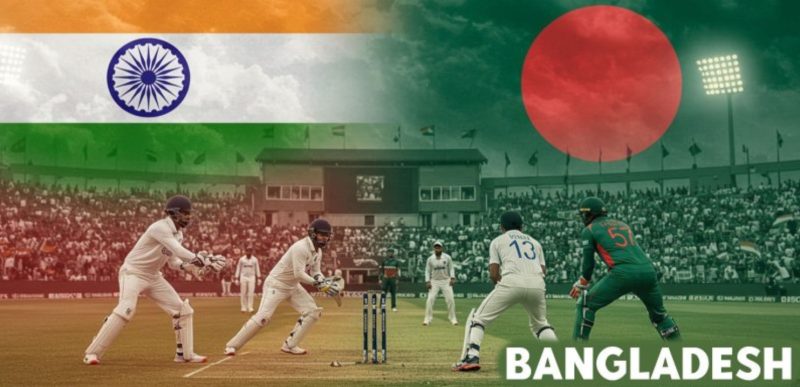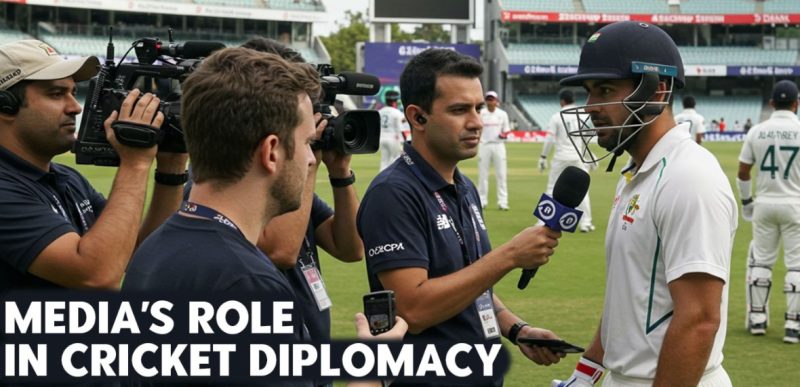Cricket is more than just a sport in South Asia — it’s a language that transcends borders, politics, and generations of complex history. When India steps onto the pitch against Pakistan, Sri Lanka, Bangladesh, or newer cricketing nations like Afghanistan and Nepal, millions of fans witness something far greater than athletic competition. The passion extends far beyond the stadiums, even shaping industries such as broadcasting, merchandise, and the growing interest in online betting sites in India for cricket, which reflects how deeply the game is embedded in everyday life
These matches serve as unofficial diplomatic channels, offering moments of unity amid regional tensions and providing a unique lens through which to understand South Asian geopolitics. The power of cricket diplomacy lies in its ability to humanise political relationships. Where formal diplomatic channels might fail or stagnate, a well-played cover drive or a spectacular catch can bridge divides that have persisted for decades.
Historical Roots of Cricket in South Asia
Cricket arrived in the Indian subcontinent during British colonial rule, but its legacy extends far beyond imperial history. The sport became a unifying force across the region, creating shared traditions and passionate fanbases that would outlast political boundaries.
After the 1947 partition, cricket remained one of the few cultural threads connecting the newly formed nations. The sport provided a common vocabulary for countries that shared linguistic, cultural, and historical ties despite their political differences. This foundation set the stage for cricket to evolve into an informal diplomatic tool.
The establishment of domestic cricket structures in each nation further strengthened these connections. Players often shared similar techniques, coaching methods, and playing styles, creating mutual respect that transcended national boundaries. These early cricket relationships laid the groundwork for the diplomatic role the sport would later play.
India–Pakistan: The Most Intense Cricket Rivalry
No cricket rivalry carries more diplomatic weight than India versus Pakistan. These matches regularly attract television audiences exceeding one billion viewers, making them some of the most-watched sporting events globally. The intensity stems not just from competitive cricket, but from the complex political relationship between the two nations.
Historic matches have often coincided with significant diplomatic moments. The 1987 World Cup encounter in Jaipur saw Pakistani fans celebrating in Indian streets, creating scenes of cross-border camaraderie. Conversely, the 1996 World Cup quarter-final in Bangalore, which Pakistan won, led to crowd trouble that reflected broader political tensions.
Cricket has also provided opportunities for diplomatic breakthrough. Former Pakistani President Pervez Musharraf’s visit to India during the 2005 Delhi Test match demonstrated how cricket could facilitate high-level political dialogue. Similarly, Indian Prime Minister Narendra Modi’s surprise visit to Pakistan in 2015, though not directly cricket-related, built upon the goodwill generated by sporting exchanges.
However, cricket can also reflect diplomatic breakdowns. Matches have been cancelled due to political tensions, and controversial incidents on the field have sometimes strained bilateral relations. The delicate balance between sport and politics in India-Pakistan cricket matches continues to influence broader diplomatic dynamics.
Cricket with Sri Lanka: Friendship and Competition
India’s cricket relationship with Sri Lanka demonstrates how sport can maintain warm bilateral ties even during difficult periods. The island nation’s emergence as a cricketing powerhouse in the 1980s and 1990s coincided with growing political and economic cooperation with India.
Sri Lankan cricket legends like Arjuna Ranatunga and Mahela Jayawardene have enjoyed tremendous popularity in India, whilst Indian players receive hero’s welcomes in Colombo. This mutual admiration has helped maintain positive diplomatic relations even when political disagreements have emerged.
The Indian cricket team’s tour of Sri Lanka in 2010, coming shortly after the end of the civil war, carried significant diplomatic symbolism. By playing matches across the island, including in previously conflict-affected areas, cricket helped signal regional stability and support for Sri Lanka’s peace process.
Bangladesh: Building Respect Through the Game

Bangladesh’s cricket journey mirrors its broader relationship with India—evolving from a one-sided dynamic to one of mutual respect and recognition. Initially, matches between India and Bangladesh were predictably one-sided affairs, but Bangladesh’s improving cricket standards have paralleled their growing diplomatic confidence.
The 2007 World Cup upset, when Bangladesh defeated India, marked a turning point in both sporting and diplomatic terms. Bangladesh’s cricket success challenged traditional South Asian hierarchies and demanded recognition as an equal partner in regional affairs.
India’s support for Bangladesh cricket development, including sharing coaching expertise and facilities, has strengthened bilateral ties. These cricket connections have facilitated broader cooperation in areas like trade, connectivity, and security cooperation.
Nepal, Afghanistan, and Emerging Cricket Relations
Cricket diplomacy has extended to newer relationships as Afghanistan and Nepal have developed their cricketing capabilities. India’s support for Afghan cricket development has provided a positive framework for engagement despite regional security challenges.
Afghanistan’s rapid rise in international cricket, achieving Test status in 2017, has been supported by Indian coaching and facilities. This sporting cooperation has helped maintain people-to-people connections even as broader regional dynamics have remained complex.
Nepal’s cricket development has similarly benefited from Indian support, with many Nepali players training in India. These cricket connections have complemented the countries’ traditionally close bilateral relationship.
When Cricket Eases Tensions
Cricket’s diplomatic power becomes most evident during moments of political tension. Sporting exchanges have continued even when formal diplomatic channels have been limited, providing alternative communication pathways between nations. Joint celebrations of cricketing achievements, such as India and Pakistan players sharing lighthearted moments during matches, create powerful visual symbols of potential cooperation. These images reach millions of people, potentially influencing public opinion about bilateral relationships.
When Cricket Reflects Tensions
However, cricket can also amplify existing tensions. Controversial umpiring decisions, on-field disputes, or crowd incidents can quickly escalate into diplomatic issues when they involve politically sensitive matchups. Social media has amplified this dynamic, with cricket controversies rapidly spreading across borders and potentially influencing public sentiment about neighbouring countries. Politicians and media outlets sometimes exploit cricket incidents to advance particular political narratives.
Media’s Role in Cricket Diplomacy

Television coverage and sports journalism significantly shape how cricket diplomacy unfolds. Media narratives around matches can either emphasise friendship and sportsmanship or highlight controversies and nationalism. Cross-border television coverage has allowed millions of fans to watch cricket matches involving their neighbours, creating shared experiences that transcend political boundaries. Commentary teams that include former players from multiple countries further reinforce cricket’s diplomatic potential.
The Future of Cricket Diplomacy in the Region
Cricket diplomacy faces both opportunities and challenges going forward. The growth of T20 leagues has created new platforms for regional cooperation, with players from different countries competing together as teammates rather than opponents. However, the commercialisation of cricket and the rise of social media nationalism present new challenges for cricket’s diplomatic role. Managing these dynamics whilst preserving cricket’s positive diplomatic impact will require careful attention from cricket administrators and governments.
Conclusion
Cricket diplomacy demonstrates sport’s unique ability to transcend political boundaries and create shared experiences across South Asia. Whilst cricket alone cannot resolve complex geopolitical challenges, it provides valuable opportunities for building understanding, maintaining dialogue, and creating positive momentum for broader diplomatic engagement. The success of cricket diplomacy in South Asia offers lessons for other regions where sport might serve similar diplomatic functions. As cricket continues evolving globally, its role as an informal diplomatic tool may become even more significant.
